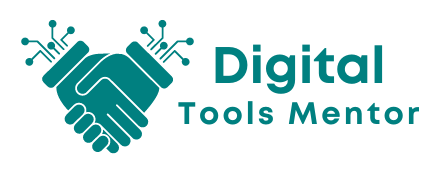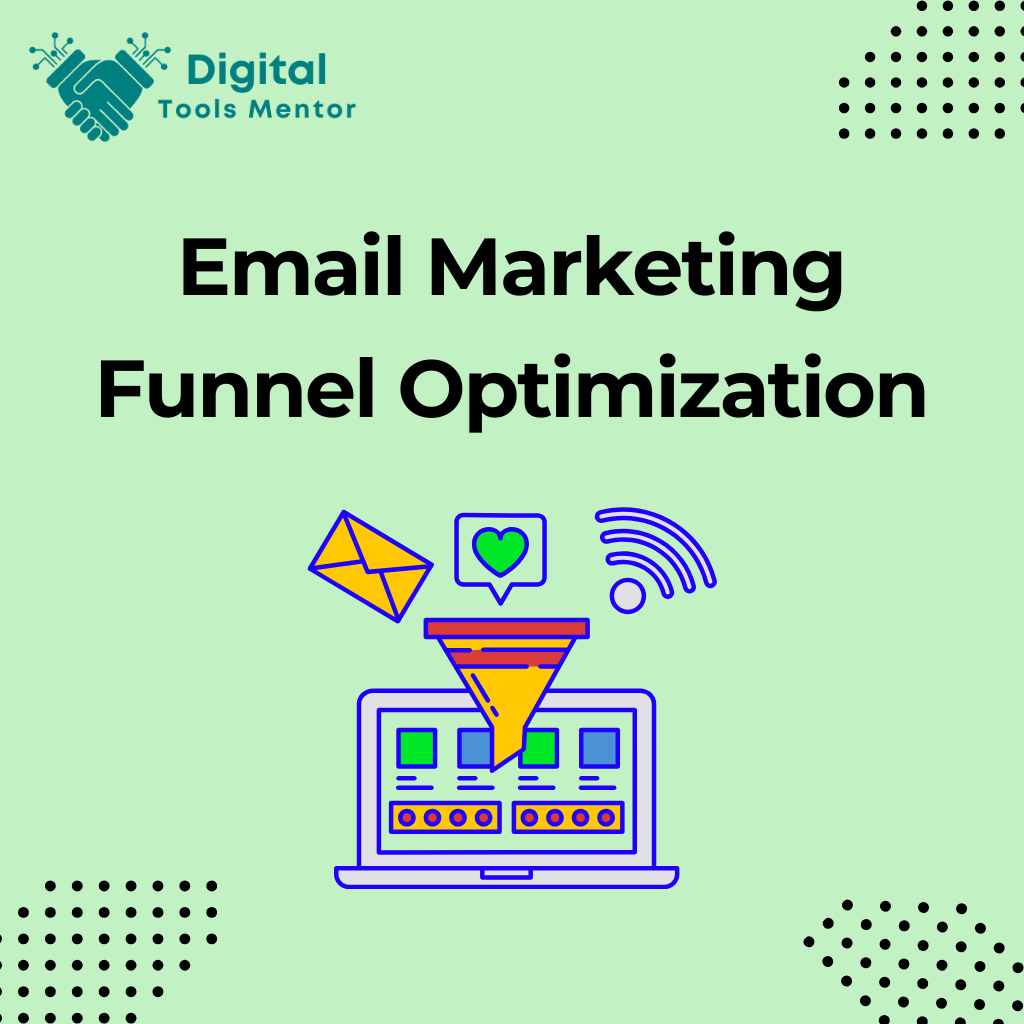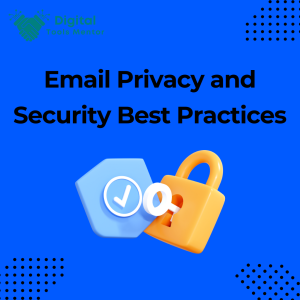Email Marketing Funnel Optimization
What is an Email Marketing Funnel?
An email marketing funnel is a structured path designed to guide potential customers from the initial point of contact towards making a purchase or completing a desired action. It mirrors the customer’s journey, beginning with their first interaction with your brand, usually through signing up for an email list, and follows them as they move through stages of increasing engagement and commitment. This funnel isn’t just about sending emails; it’s about strategically communicating the right message at the right time to nurture leads and convert them into loyal customers.
Importance of Email Marketing Funnel Optimization
Optimizing your email marketing funnel is crucial for several reasons:
- Maximizing Efficiency: Properly structured funnels ensure that resources are used efficiently, targeting only the most promising leads with the most effective content. This approach helps to reduce waste and increase the ROI of your marketing efforts.
- Enhancing Customer Experience: A well-optimized funnel delivers tailored messages that resonate with the audience at different stages of their journey. This personal touch not only improves customer experience but also builds trust and loyalty, which are essential for long-term relationships.
- Driving Conversions: By fine-tuning the messages and calls-to-action (CTAs) presented at each stage of the funnel, businesses can significantly increase their conversion rates. Optimization helps in identifying the best-performing elements and scaling them to reach more potential customers effectively.
- Achieving Scalability: With a robust email marketing funnel, businesses can scale their marketing efforts without a corresponding increase in effort or cost. Automation and careful planning allow for handling an increasing number of leads smoothly, facilitating growth.
In summary, an optimized email marketing funnel aligns closely with business goals by converting prospects into customers and turning one-time buyers into repeat customers and brand advocates. Through continual testing and refinement, the funnel becomes a powerful tool for sustainable business growth.
Explore 23 Best Email Marketing Platforms in 2025
Understanding the Stages of an Email Funnel
Different Stages: Awareness, Interest, Decision, and Action
The email marketing funnel can be viewed as a journey that guides potential customers through four distinct stages, each critical to nurturing leads and boosting conversions. Here’s a closer look at each stage:
- Awareness: This is the top of the funnel where potential customers first come into contact with your brand. At this stage, the goal is to capture the attention of your audience. Emails might include newsletters, educational content, or introductions to your brand’s value proposition. The key is to spark interest and make recipients aware of how your brand fits into their needs or interests.
- Interest: Once awareness is established, the next stage is to nurture the interest of your leads. This involves sending more detailed information about products or services, such as detailed guides, webinars, or more in-depth articles that address specific problems or needs that your product or service can solve. The content here is designed to engage at a deeper level, encouraging recipients to learn more about what you offer.
- Decision: At this stage, potential customers are considering whether to make a purchase. They compare your offerings with competitors or evaluate the benefits of starting a trial. Emails sent during this phase often include product comparisons, case studies, testimonials, or special offers that help sway the decision toward a purchase.
- Action: This is the conversion stage where interested leads turn into customers. Emails in this stage are focused on closing the sale and may include special discount codes, limited-time offers, or a direct call-to-action like “Purchase now” or “Sign up today.” This stage requires a direct approach with a clear and compelling call to action.
How Each Stage Plays a Crucial Role in Customer Conversion
Each stage of the email funnel plays a vital role in the conversion process:
- Awareness: Builds the foundation by introducing potential customers to your brand. Without this initial contact, subsequent engagement is impossible.
- Interest: Keeps the audience engaged by providing them with relevant and useful content that addresses their needs or sparks their curiosity about what you have to offer.
- Decision: Helps overcome objections and reassure leads about the value of your offerings. This stage is critical as it directly influences the buying decision.
- Action: Directly impacts the bottom line by converting leads into paying customers or encouraging them to take the desired action. This stage is where the effectiveness of your previous efforts is tested and monetized.
Understanding and optimizing each stage of the email marketing funnel ensures that no part of the customer journey is overlooked, maximizing the chances of turning leads into loyal customers. Each stage requires a different approach and message, which must be tailored to the mindset and needs of potential customers at that particular point in their journey.
Key Metrics to Monitor in Your Email Funnel
Monitoring specific metrics in your email marketing campaigns allows you to assess their effectiveness, pinpoint areas for improvement, and better understand your audience’s behavior. Here are some essential metrics to track:
Core Email Marketing Metrics
- Open Rates: This metric measures the percentage of recipients who opened your email. It’s crucial for gauging the initial appeal of your email, which is largely determined by your subject line and sender name. A low open rate might indicate that your emails are either not interesting to your audience or are being marked as spam.
- Click-Through Rates (CTR): The CTR tells you the percentage of email recipients who clicked on one or more links contained in your email. This metric is vital for assessing how well your message resonates with your audience and motivates them to take action. It’s particularly useful for evaluating the effectiveness of your call-to-action (CTA).
- Conversion Rates: Conversion rate is a key performance indicator that measures the percentage of email recipients who completed a desired action, such as making a purchase or signing up for a webinar, after clicking on a link within an email. This metric helps you understand how effective your emails are at driving end goals.
- Bounce Rates: Bounce rate refers to the percentage of your emails that could not be delivered to the recipient’s inbox. There are two types of bounces — hard and soft. Hard bounces might occur because the email address is invalid, while soft bounces might happen due to temporary issues like a full mailbox. High bounce rates may affect your sender reputation, so it’s important to keep them as low as possible.
Tools and Software for Tracking These Metrics
To effectively monitor these metrics, you can use various email marketing tools that offer analytics features. Here are some recommendations:
- Mailchimp: Known for its user-friendly interface, Mailchimp provides detailed reports on open rates, CTR, bounce rates, and more. It also offers visualization tools that help you understand the performance trends of your campaigns.
- HubSpot: Beyond just tracking basic email metrics, HubSpot allows you to integrate these metrics with other sales and marketing data, providing a holistic view of your customer interactions across different channels.
- Constant Contact: This tool offers robust tracking and reporting features that help marketers monitor campaign performance. It also provides insights into the best times to send emails based on past engagement.
- Campaign Monitor: With its comprehensive analytics dashboard, Campaign Monitor offers detailed insights into opens, clicks, social shares, bounces, and geographic data. It’s particularly useful for segmentation and personalization.
- Google Analytics: While not solely an email marketing tool, Google Analytics can be integrated with your email marketing software to track conversions and detailed user behavior after a recipient clicks through to your website from your emails.
By regularly monitoring these key metrics, you can make informed decisions to refine your email marketing strategy, ultimately leading to improved engagement and conversions. It’s important to use these insights to test different approaches in your email content and design, maximizing the effectiveness of your email marketing funnel.
Segmentation Strategies to Enhance Performance
Importance of Audience Segmentation for Targeted Messaging
Segmentation is a powerful technique in email marketing that involves dividing your audience into smaller groups based on specific criteria. This approach enables you to send more relevant and personalized messages to each segment, which can significantly enhance engagement rates, improve customer satisfaction, and increase conversions. By targeting messages that resonate with the unique needs and interests of each group, you minimize the risk of subscribers feeling that the content is irrelevant or generic.
Tips on How to Segment Lists Based on Behavior and Demographics
Here are practical tips for effectively segmenting your email lists to drive better campaign performance:
- Demographic Segmentation: Start by categorizing your audience based on basic demographic information such as age, gender, location, and occupation. This data can often be collected at the point of sign-up or through subsequent customer interactions. For example, you might send different product recommendations to different age groups or customize email content for different locations to account for regional interests or weather patterns.
- Behavioral Segmentation: This involves grouping subscribers based on their interactions with your emails and your website. Common behavioral data points include purchase history, email open rates, and clicked links. For instance, you can segment users who frequently open emails but don’t purchase, and target them with special promotions or additional information about your products.
- Engagement Level Segmentation: Assess how actively subscribers are engaging with your emails. Create segments for highly engaged users, occasionally engaged users, and inactive users. You can then tailor your strategies to re-engage dormant subscribers or reward active ones to foster loyalty.
- Customer Lifecycle Stage: Segment your audience based on where they are in the customer journey. New subscribers might receive introductory emails about your brand and value proposition, while long-term customers might receive loyalty discounts or be encouraged to join a referral program.
- Purchase Behavior: Track and segment customers based on their purchasing behavior and patterns. Segments can be created for one-time buyers, repeat customers, high-value customers, and those who have abandoned shopping carts. Tailoring messages to each group, such as sending reminder emails for abandoned carts or exclusive offers for VIP customers, can effectively move them further along the funnel.
- Psychographic Segmentation: This involves grouping people based on their lifestyles, interests, values, and attitudes. Surveys and feedback forms can help gather this type of information, allowing for highly personalized marketing strategies that resonate on a deeper level with recipients.
Tools for Effective Segmentation
Utilize email marketing platforms that offer robust segmentation features. Tools like Mailchimp, HubSpot, and ActiveCampaign provide user-friendly interfaces for creating and managing segments based on the criteria mentioned. They also offer automation capabilities to dynamically segment audiences as new data becomes available.
By employing these segmentation strategies, you can ensure that the right content reaches the right people at the right time, greatly increasing the efficiency of your email marketing efforts. This not only enhances the user experience by making your communications more relevant and personalized but also drives better overall performance of your email campaigns.
Crafting Compelling Content for Each Funnel Stage
Creating content that resonates with subscribers at different stages of the email funnel is crucial for maintaining engagement and driving conversions. Each stage has unique needs and expectations, which means your content strategy must be tailored accordingly.
Guidelines on Creating Relevant Content
- Awareness Stage:
- Objective: Introduce your brand and values.
- Content Suggestions: Educational content that addresses common problems or interests related to your industry. This could be in the form of blog posts, infographics, or industry reports.
- Tone and Style: Informative and helpful. The focus should be on providing value and establishing expertise without a hard sell.
- Interest Stage:
- Objective: Deepen the relationship by sharing more detailed information.
- Content Suggestions: Webinars, detailed guides, video tutorials, or case studies that showcase your solutions in action. Highlight how your products or services solve specific problems.
- Tone and Style: Engaging and insightful. Use compelling storytelling to draw readers in and keep them interested.
- Decision Stage:
- Objective: Encourage a decision to purchase or commit.
- Content Suggestions: Product comparisons, testimonials, reviews, and special offers or incentives. Demonstrate the value and benefits of choosing your solution over others.
- Tone and Style: Persuasive and reassuring. Address potential objections and reinforce the benefits with social proof and data.
- Action Stage:
- Objective: Drive the conversion.
- Content Suggestions: Clear and compelling calls-to-action, limited-time offers, free trials, or money-back guarantees. Make it easy and risk-free to take the final step.
- Tone and Style: Direct and urgent. Create a sense of urgency with limited-time offers or exclusive deals.
Examples of Effective Email Content for Different Segments
- Awareness Example: A home decor brand could send an email with “10 Quick Tips to Brighten Any Room,” linking to an informative blog post. This introduces the brand’s expertise in a helpful and non-intrusive way.
- Interest Example: A software company could offer a free webinar on “Increasing Productivity with Automation,” providing practical advice that also highlights the features of their product.
- Decision Example: An online retailer might send a comparison chart showing their product versus competitors, coupled with customer testimonials to build trust and credibility.
- Action Example: A fitness center could send a “Last Chance” email for a discounted annual membership with a strong call-to-action like “Join Now and Save 20%!”
By tailoring the content to meet the needs and interests of subscribers at each stage of the funnel, you can effectively guide them towards making a purchase. Remember, the key is to progressively build trust and provide value, making each stage of the journey engaging and relevant to the audience’s current relationship with your brand.
Optimizing Email Designs for Better Engagement
Creating visually appealing emails is essential for capturing attention and driving engagement. The design of your emails plays a pivotal role in how your message is perceived and acted upon by recipients. Here’s a guide to optimizing your email designs for better engagement.
Importance of Visual Elements in Emails
Visual elements in emails, such as images, typography, and colors, significantly influence how recipients interact with your content. Good design can attract attention, simplify the message, and enhance the overall user experience. It makes the email not only more enjoyable to read but also easier to navigate, helping guide the reader toward the desired action.
Best Practices for Email Layout, Images, and Call-to-Action Buttons
- Consistent Branding:
- Maintain a consistent visual identity across all emails, which includes using your brand colors, logo, and font styles. This consistency helps increase brand recognition and trust.
- Responsive Design:
- Ensure your emails look good on all devices, especially mobiles, as a significant portion of users access their email on their phones. Use a responsive design that adjusts to different screen sizes and orientations.
- Effective Use of Images:
- Use high-quality images that are relevant to your content. Images can break up text, illustrate points, or showcase products effectively. However, make sure they are optimized for quick loading times and are not too large in file size.
- Include alt text for images, which improves accessibility and ensures that your message is conveyed even if the images don’t load.
- Clear and Compelling Call-to-Action (CTA):
- Your CTA buttons or links should stand out from the rest of the email. Use contrasting colors and sufficient padding around them to make them easy to spot and click.
- Be clear about what you want the recipient to do. Use action-oriented text such as “Shop Now,” “Learn More,” or “Join Free for a Month.”
- Simple and Clean Layout:
- Use a clean layout with plenty of white space. Avoid cluttering the email with too much content. A simple, uncluttered design helps focus the reader’s attention on the most important elements, like your CTA.
- Organize information hierarchically, using headings and subheadings to guide the reader through the content in a logical manner.
- Personalization Elements:
- Incorporate personalization beyond just using the recipient’s name. Tailor content, offers, and images to the recipient’s past behavior or preferences if possible, which can significantly boost engagement.
- Testing and Optimization:
- Regularly test different designs and elements to see what works best with your audience. A/B testing can be particularly effective in determining the most effective design elements, layouts, and CTAs.
- Accessibility:
- Ensure your email design is accessible to all users, including those with disabilities. Use sufficient color contrast, readable fonts, and a logical structure that can be navigated with screen readers.
By adhering to these best practices, you can create email designs that not only capture attention but also drive higher engagement and conversions. Remember, the goal of your email design should always be to enhance the clarity of your message and encourage readers to take action.
Testing and Improving Your Emails
A/B testing, also known as split testing, is a method of comparing two versions of an email to see which one performs better on a given metric. This approach allows you to make data-driven decisions about your email marketing strategies. Here’s how to effectively utilize A/B testing to refine your email campaigns.
How to Use A/B Testing to Refine Email Elements
- Choose One Variable to Test: To conduct an effective A/B test, focus on changing only one element at a time. This could be the subject line, the call-to-action, the layout, or any other component. This way, you can clearly identify which variable affects the outcome.
- Create Two Variants: Develop two versions of your email, with only the chosen variable differing between them. For example, if you are testing subject lines, everything else in the emails should be identical except for the subject line.
- Segment Your Audience: Randomly divide your audience into two (or more, depending on the number of variants) equal, representative segments. Each segment will receive a different version of the email.
- Send and Monitor: Deploy your emails simultaneously to control for time-based variables. Use your email marketing software to track the performance of each version based on your goals.
- Analyze the Results: After a significant amount of data has been collected, analyze the results to determine which version performed better. Look at metrics like open rates, click-through rates, conversion rates, etc.
- Implement the Findings: Use the insights gained from the test to optimize your future emails. If one subject line significantly outperformed the other, consider why it was more effective and how you can apply these learnings to future campaigns.
- Repeat: A/B testing is not a one-time task but a continuous improvement process. Regularly test different elements to continually refine your approach.
Identifying What to Test
- Subject Lines: Since the subject line is often the first impression your email makes, it’s crucial to get it right. Test different tones (informative, urgent, casual), personalization tactics (using the recipient’s name vs. not), or formats (questions vs. statements).
- Email Content: Within the email, you can test various aspects of the content such as the tone of the message, the length of the email, the presence of images or videos, and the type of information presented (e.g., user benefits vs. technical features).
- Call-to-Action (CTA): The CTA is critical for driving conversions. Test different CTA texts, colors, placement within the email, and sizes to see which variations drive the most clicks and conversions.
- Personalization: Beyond using the recipient’s name, test other forms of personalization like content tailored to past purchase behavior, browsing behavior, or demographic details.
- Delivery Times: The time of day and day of the week can significantly impact the performance of your emails. Test different sending times to find when your audience is most likely to open and engage with your emails.
- Email Layout and Design: Experiment with different email designs, including where you place images and text, how you use colors, and the overall layout to find the most visually appealing setup that increases engagement.
By regularly conducting A/B tests, you can continuously improve the effectiveness of your email marketing efforts, ensuring that every email you send out is optimized for the best possible performance.
Leveraging Automation for Efficiency
Automation in email marketing simplifies the management of complex email campaigns, allowing for more personalized and timely interactions with your audience. It can significantly enhance the efficiency and effectiveness of your email marketing efforts.
Benefits of Using Automation in Your Email Marketing Funnel
- Time Savings: Automation reduces the need for manual tasks, such as sending out emails at specific times or following up with customers who have taken certain actions. This frees up your marketing team to focus on more strategic activities.
- Consistency: Automated emails ensure that communications are consistent in both timing and message. This helps maintain a professional image and ensures that all subscribers receive the same level of attention.
- Scalability: Automation makes it easier to scale your marketing efforts without a corresponding increase in workload or resources. As your subscriber list grows, automation supports the increased demand without additional effort.
- Personalization: By using data triggers and behaviors to automate personalized messaging, you can achieve a higher level of personalization in your communications. This is often more engaging for subscribers and can lead to higher conversion rates.
- Improved Customer Experience: Automated workflows can help guide a customer through the buying process by providing timely information and support. This enhances the overall customer experience and can improve customer retention.
- Enhanced Targeting: Automation tools allow you to segment your audience based on their actions and behaviors, enabling you to send highly targeted emails that are more likely to convert.
Examples of Automation Workflows to Save Time and Personalize Experiences
- Welcome Series: Automatically send a series of welcome emails when a new subscriber joins your list. This might include an introductory email, a special offer, and a follow-up email a few days later with additional information about your products or services.
- Birthday or Anniversary Emails: Set up an automation that sends customers a special discount or message on their birthday or on the anniversary of when they first became a customer. This personal touch can help boost customer loyalty.
- Abandoned Cart Emails: Implement an automated email sequence that triggers when a customer leaves items in their shopping cart without purchasing. The first email might remind them of their cart, followed by another email offering a small discount or free shipping.
- Re-engagement Campaigns: Create a workflow to target subscribers who have not engaged with your emails for a set period. This might involve sending a “We miss you” email with a special offer to rekindle their interest.
- Post-Purchase Follow-Up: After a customer makes a purchase, automate a series of follow-up emails that thank the customer, provide additional product tips or care instructions, and cross-sell related products.
- Lead Nurturing: For potential customers who have shown interest but haven’t yet purchased, set up a drip campaign that sends them information and testimonials about your products, along with time-limited offers.
- Feedback Requests: Automatically send a feedback request email a few days after product delivery. This not only provides you with valuable customer insights but also engages customers and shows that you value their opinion.
By incorporating these automated workflows into your email marketing strategy, you can significantly improve efficiency, personalize the customer experience, and enhance the overall effectiveness of your campaigns. Automation allows for more relevant and timely interactions with subscribers, driving better results for your business.
Integrating Your Email Funnel with Other Marketing Efforts
Integrating your email marketing funnel with other marketing efforts ensures a cohesive strategy that enhances overall engagement and effectiveness. By aligning your email campaigns with social media, content marketing, and other digital marketing channels, you create a unified brand experience for your audience.
How to Align Your Email Marketing Strategies with Other Channels
- Social Media Integration:
- Cross-Promotion: Promote your email newsletter on your social media platforms to encourage sign-ups. Conversely, include social media icons in your emails to increase your social following.
- Shared Content: Use insights from social media interactions to inform the content of your emails. Highlight popular social media posts or campaigns within your emails to engage your audience further.
- Retargeting Ads: Use email interaction data to segment audiences for social media ads. For example, target users who clicked on a specific link in an email with a related ad on social media platforms.
- Content Marketing Synergy:
- Content Distribution: Promote new content, like blog posts or whitepapers, through your email newsletters. This drives traffic to your website and increases the consumption of your content.
- Email Content as Content: Repurpose high-performing email content into blog posts, infographics, or videos. This not only saves resources but also ensures consistency across channels.
- Feedback Loop: Use feedback from email responses to tailor your content marketing efforts. This can help refine your content strategy to better meet the needs and interests of your audience.
- Coordinating with Paid Advertising:
- Consistent Messaging: Ensure that the messaging in your emails aligns with the copy in your paid ads, whether on search engines, social media, or display networks. This reinforces the message and improves conversion rates.
- Emails as Follow-Ups: After initial contact through ads, use emails as a follow-up tool to deepen the relationship. Tailor these emails based on the user’s interaction with the ad.
- Leveraging SEO Insights:
- Keyword Synergy: Use SEO insights to optimize the content of your emails for better performance. Keywords that perform well in search engines can be used to optimize email subject lines and content for better engagement.
- Shared Metrics: Analyze the overlap in audience behavior between website SEO and email engagements. This can inform both strategies, optimizing content placement and timing.
The Importance of a Consistent Message Across Platforms
Maintaining a consistent message across all marketing channels is crucial for several reasons:
- Brand Recognition: Consistency helps in building a strong brand identity. When customers receive the same message through different channels, it reinforces your brand’s voice and values.
- Trust Building: Inconsistencies in messaging can confuse customers and may lead to distrust. A consistent message across platforms ensures that your brand is seen as reliable and trustworthy.
- Enhanced Customer Experience: A seamless experience across email, social media, content marketing, and paid ads makes the customer’s journey smoother and more engaging, which can lead to higher satisfaction and loyalty.
- Efficiency in Marketing Efforts: When all channels work together with a unified message, marketing efforts are not only more effective but also more efficient in terms of time and resource use.
Integrating your email marketing with other efforts requires careful planning and coordination but yields significant benefits in creating a comprehensive and cohesive marketing strategy. By ensuring consistency and strategic alignment, you can effectively increase the reach and impact of your marketing efforts across all platforms.
Predictive Analytics and Dynamic Content
In today’s digital marketing landscape, predictive analytics and dynamic content play pivotal roles in optimizing marketing funnels. Predictive analytics utilizes historical data and machine learning algorithms to forecast future trends and behaviors, enabling marketers to make data-driven decisions. On the other hand, dynamic content adapts to user behavior and preferences in real-time, enhancing engagement and conversion rates throughout the funnel.
Recommendations for Advanced Tools
1. Google Analytics 4 (GA4)
- Key Features: Provides advanced predictive insights using AI and machine learning to predict user behavior and conversion outcomes. GA4’s predictive metrics, such as churn probability and revenue prediction, help marketers optimize their funnels.
- Benefits: Enables marketers to understand customer journeys better, identify high-value segments, and optimize marketing efforts across channels.
2. Adobe Experience Cloud
- Key Features: Integrates predictive analytics with real-time data to deliver personalized experiences. Offers AI-powered insights into customer behaviors and preferences, allowing for dynamic content delivery.
- Benefits: Enhances customer engagement through personalized experiences, improves conversion rates, and optimizes marketing campaigns based on predictive insights.
3. Optimizely
- Key Features: A/B testing and experimentation platform that uses predictive analytics to forecast the impact of changes in marketing campaigns and funnel optimization strategies.
- Benefits: Enables marketers to test hypotheses, optimize user experiences, and improve conversion rates by leveraging predictive analytics and real-time data.
4. Dynamic Yield
- Key Features: AI-powered personalization platform that offers predictive analytics and dynamic content capabilities. Uses machine learning algorithms to predict user preferences and behaviors, delivering personalized experiences in real-time.
- Benefits: Increases engagement and conversions by delivering relevant content and offers based on predictive insights, optimizing the entire funnel from awareness to conversion.
5. Salesforce Marketing Cloud
- Key Features: Leverages predictive analytics to forecast customer behaviors and preferences. Integrates with CRM data to deliver personalized messaging and dynamic content across marketing channels.
- Benefits: Enhances customer journeys by delivering the right message at the right time, improving conversion rates and overall marketing ROI.
Conclusion
Incorporating predictive analytics and dynamic content into your funnel optimization strategy can significantly improve marketing performance and customer engagement. By leveraging advanced tools like Google Analytics 4, Adobe Experience Cloud, Optimizely, Dynamic Yield, and Salesforce Marketing Cloud, marketers can automate processes, personalize experiences, and optimize conversions throughout the funnel journey. These tools not only streamline marketing efforts but also enable businesses to stay competitive in a data-driven digital landscape.




